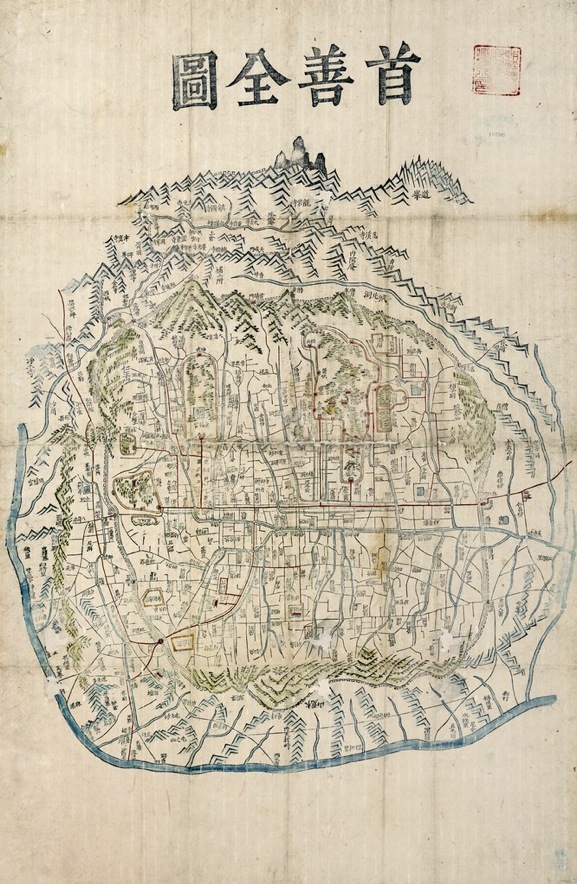
An ancient map of Seoul.
When dynasties once ruled the empire of Goryeo (what Korea was named once), kings were born & thrones were fought for. King Taejo Yi Seonggye declared a new dynasty in 1392 under the name of Joseon, thus reviving an older dynasty also known as Joseon that was founded four thousand years previously and renamed it to “Kingdom of Great Joseon”. He established himself a palace, known as Gyeongbokgung which served as the main palace for successor Kings of the Joseon dynasty and their households until it was systematically destroyed & burnt to ruins during the Japanese invasion. Restoration & reconstruction work began after it was left derelict for centuries & it stands as the most beautiful & the grandest of all five palaces in Korea today.
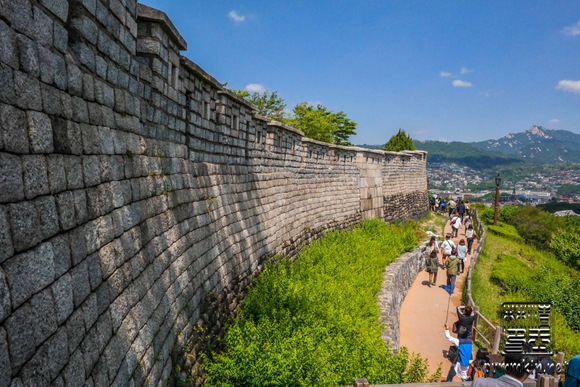
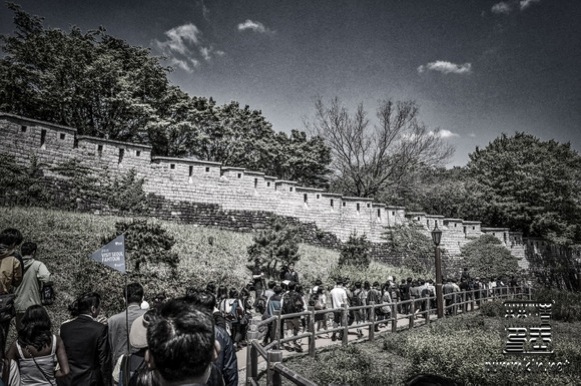
Walking alongside the fortress.
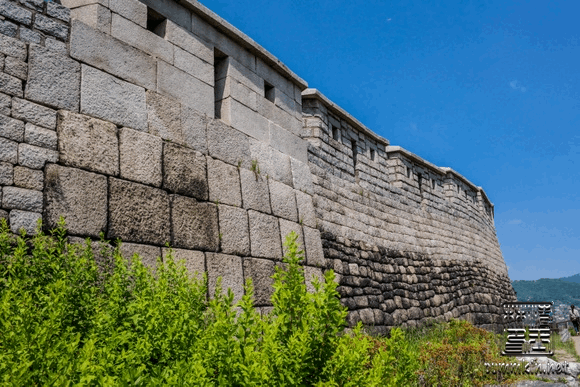
The old & new stone blocks as part of the restoration process.

‘Taejo’ is a temple name, a posthumous title used for Chinese, Korean & Vietnamese royalty. Chosen to reflect the circumstances of the emperor’s reign, it means ‘ancestors.’ In Korea, temple names are used to refer to Kings in the Goryeo & Joseon dynasties.

One of Gyeongbokgung’s grand entrances.
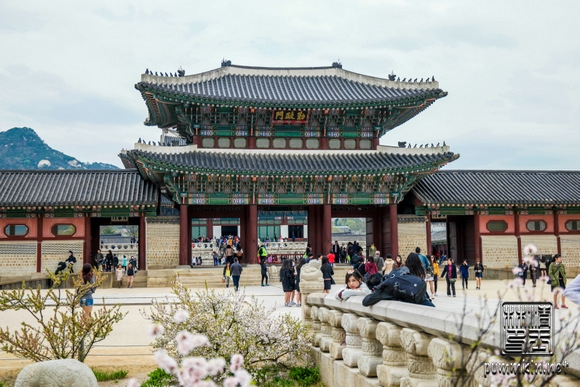
The palace was not the only grand structure he built. The foresight of King Taejo who was once a General of the army of the dynasty he overthrew, knew the grandeurs of a kingdom should be demarcated by a structure around the city he ruled. He wanted to build a fortress. He decreed & enlisted the service of one hundred ninety seven thousand four hundred (197,400) young men around the country over two years to participate in the erection of an 18 kilometre fortress with four main gates and four auxiliary gates that fell in line with the Chinese cardinal directions of East, South, West, North. They are Heunginjimun (East Gate), Sungnyemun (South Gate), Donuimun (West Gate) and Sukjeongmun (North Gate) with the East & the South gates being designated as National Treasures today. The fortress took 30 years to complete.

Gyeonghoeru was constructed in 1412, the 12th year of the reign of King Taejong, Gyeonghoeru Pavilion, is a hall used to hold important and special state banquets during the Joseon Dynasty.

The Throne Room.
King Taejo designated an auspicious day for the groundbreaking ceremony on 1 January 1396. The fortress was completed in 98 days after the war along the mountains of Bugaksan, Naksan, Namsan, and Inwangsan. The wall contained eight gates, all of which were originally constructed between 1396 and 1398. He ordered for the stones to be inscribed with the names of the county and prefecture responsible for constructing a given wall section, as well as the name of that section, while in the mid-Joseon, they were marked with the names of the supervisors and lead technicians, and the construction date. The inscribed stone blocks in the photo below, can be seen outside the wall, at the end section of the Naksan Trail.
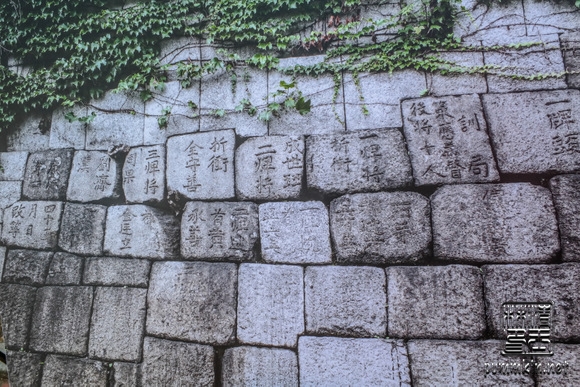
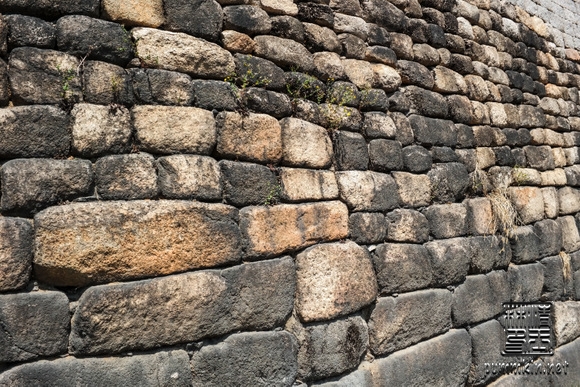
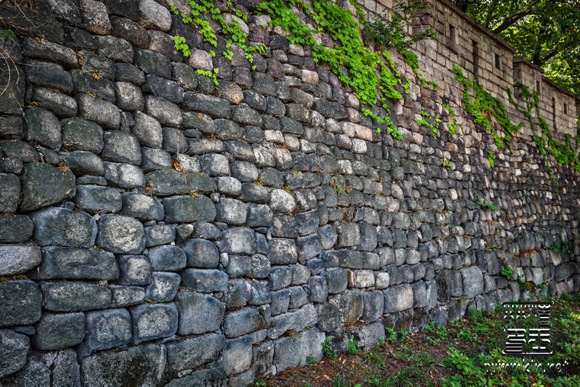
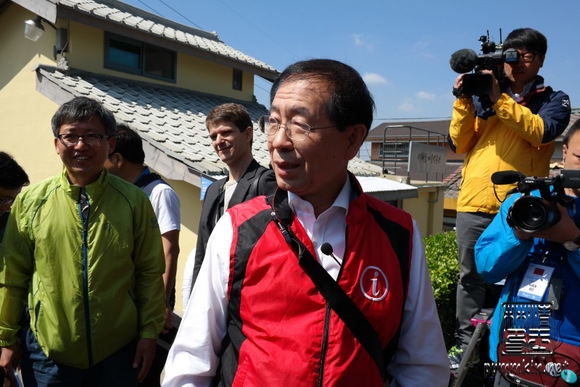
Mayor Park arriving at the start of the tour.
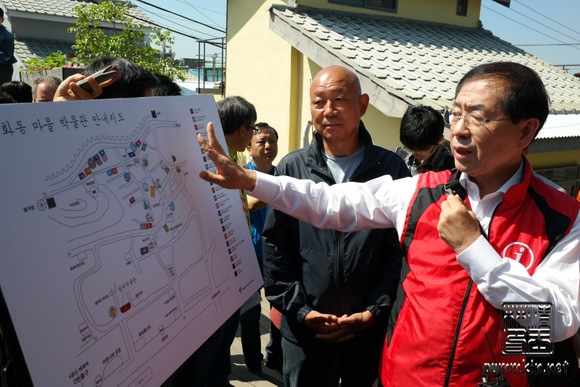
Mayor Park elaborates on the history of the Fortress.
There are six walking courses or trails you can do, the Baegaksan/Bugaksan Trail, the Naksan Trail, the Namsan Trail, the Inwangsan Trail, Heunginjimun Trail & Sungnyemun Trail. We were taken on a journey along the Naksan Trail by the Mayor himself, Mr. Park Won Soon, who’s fondly loved by the people of Seoul for his candour & spontaneity. We walked along the path parallel to the section of the wall that cordoned off Ihwa Mural Village from the ‘’outer city’, marvelling at the artists who painted the stairways & walls of this village with vibrant murals, thus enlivening the place. We passed these colourful expressions either adorned with paint or mosaic-plastered on the riser of the staircase making the vertical hike not so challenging. This village was once left out in the urbanisation process, used to be seen as a backward neighbourhood but a collaboration between the public, cultural artists, the metropolitan government and the residents turned Ihwa-dong into a vibrant art village.
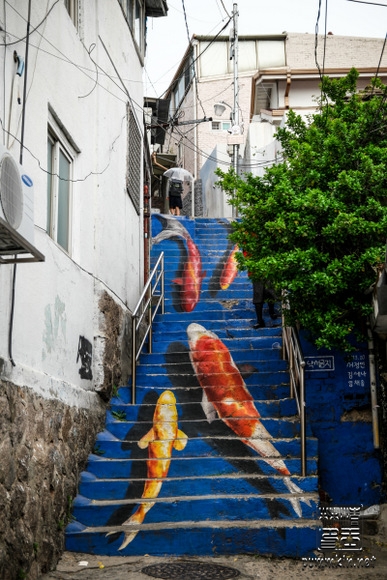
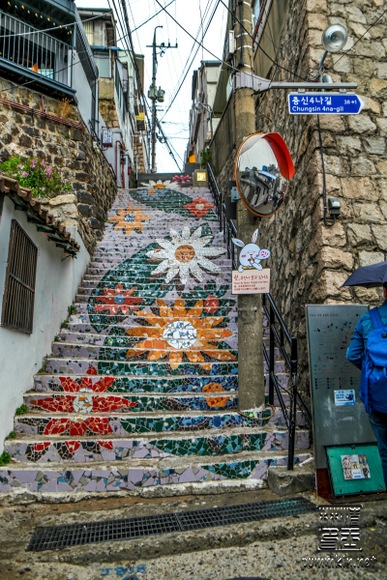

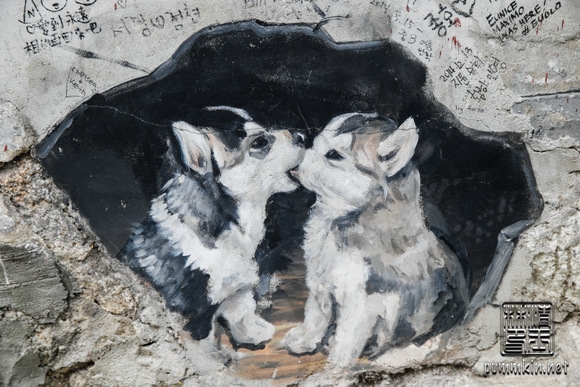
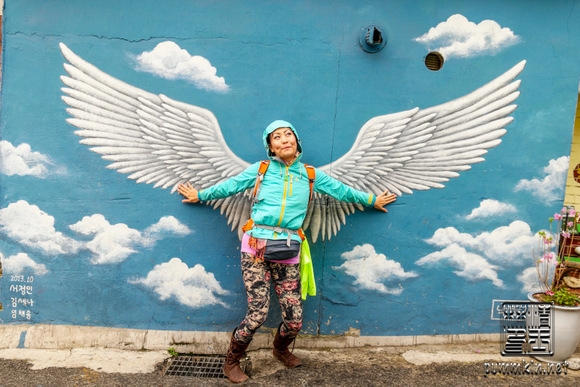
Despite the fact that he overthrew the dynasty of Goryeo, and purged officials who remained loyal to the old regime, King Taejo Yi Seonggye was very much regarded as a revolutionary and a decisive ruler who deposed the inept, obsolete and crippled governing system to save the nation from many foreign forces and conflicts. His sons of different wives, fought & killed each other in a preemptive move after the death of his beloved second Queen (wife). While he was still mourning, he crowned his second son to be king but 2 years later, this King voluntarily abdicated it to his brother, Yi BangWon, who became King Taejong, the one who rightfully deserved the throne as he had demonstrated the best potential of a good ruler even during his father’s reign.
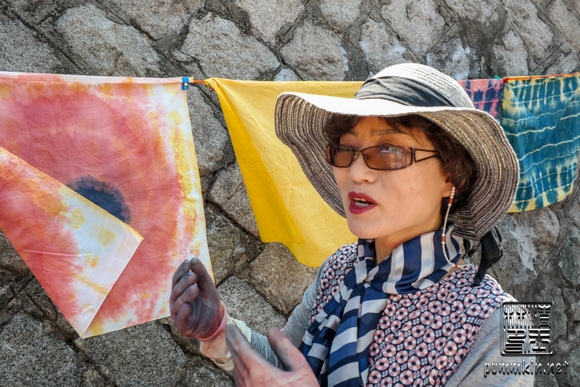
An artisan in the village who specialises in tie-dye artwork.
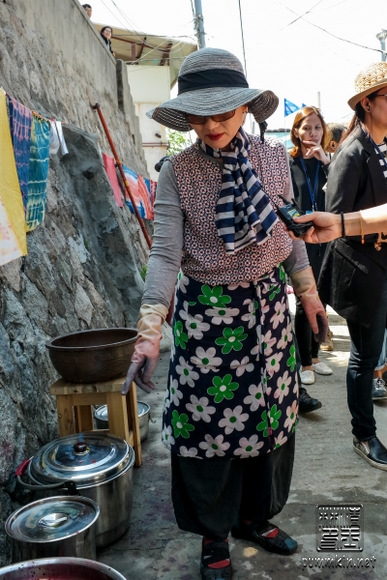
The artisan explains the colouring process.
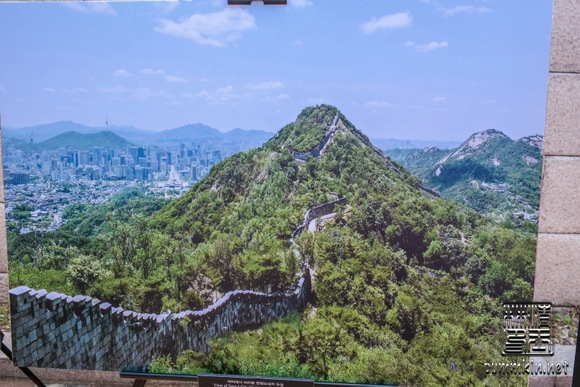
The Joseon period has left an indelible mark on modern Korean etiquette, cultural norms, societal attitudes towards current issues. A substantial legacy was left to the Koreans of today, with much of the modern Korean language and its dialects derived from the culture and traditions of Joseon.
This fortress, even with some parts of it torn down in the city’s development process, significant parts had been preserved as a historical reminder of the dynasty that influenced the culture of Koreans today. It has in the running to be listed as UNESCO’s World Heritage Site by 2017.
What else can you do in Seoul? Gwangjang Market food experience, silver ring smithing & kimchi making workshop in the next post as I bring you other hidden treasures!
For more information, go to Seoul Tourism’s official page of the Fortress here and download your guide book! http://bit.ly/1gc6iJl
To download the English version, you need to view the site in Korean to get to the download section because the English section of the guide book doesn’t work. I’ve simplified the process for you by including the direct download link here:- http://bit.ly/1IuQ88R
Full resolution pictures can be see in my Flickr album
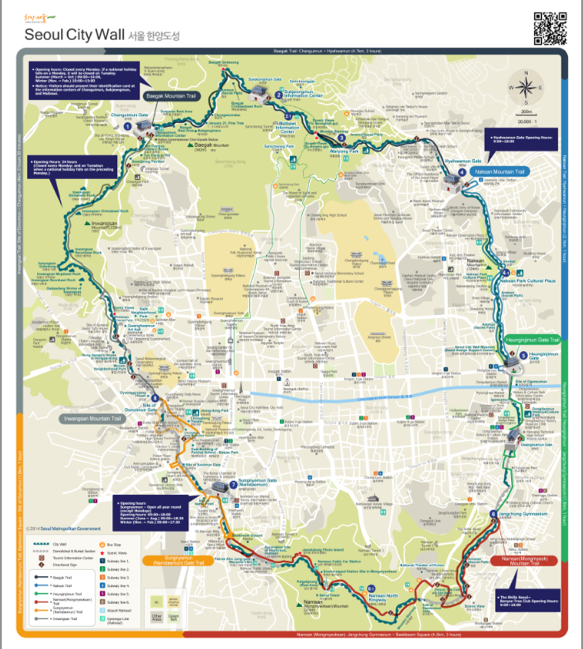

Wow..never know there are structures like the great wall of china doest exist in Korea. Thanks for sharing. I like those painting on the staircase.